 info@kaziranga-national-park.com
info@kaziranga-national-park.com + 9212777225 / 9212553107
+ 9212777225 / 9212553107

- Home/
- Assam Travel Guide
About Assam
Stretching along the Brahmaputra River Valley with rolling fields of aromatic tea, thick jungles and appealing wildlife, Assam is a land of remarkable diversity that will ignite your curiosity, shake your senses and warm your soul. This charming travel destination in North East India has a rich history and culture. Also, it is well known for national parks serving as dwelling lands of elephants, rhinoceroses, tigers, deer and primates. Besides the wildlife, it’s the subtly flavoured cuisine and the exquisite heritage that cast a magical spell in the hearts of travellers, making Assam a must-visit tourist destination in India. The state is also referred to as the birthplace of Indian tea. Here, more than 3,000 sq km of land can be seen covered with bright-green tea estates.
Tourism in Assam
Assam, a rich blend of tranquillity and spontaneity, clings to the rest of India by a narrow thread (the Siliguri Corridor). Assam is a part of the enchanting and renowned seven sisters, who are difficult to access but whose ageless forests and strong mountain ranges are constantly in the back of almost every traveller’s mind. To look for tourist destinations, Assam is the second largest state in Northeast India to look into, with an area of 78,440 km square. Another feature that best distinguishes Assam physically is its proximity to foreign countries such as Bangladesh and Bhutan. The state is influenced by every neighbouring state as well as the country’s beauty. Not to forget the huge Brahmaputra, which flows through Assam and is Asia’s mightiest yet most magical river.
From wildlife adventures to tourist places to pilgrimage sightseeing tours, Assam has something for everyone. Guwahati, Haflong, Tezpur, Jorhat, Majuli, Sivasagar, and Dibrugarh are some of the best places to visit in Assam.
The tribal population of Assam, primarily the Bodo and Mishing tribes, is an important aspect of its culture. When it comes to culture, Assamese cuisine is a must-try for travellers, especially the must-try dishes like Machor Tenga and Duck Roast. Along with food, Assamese like tea, which is usually consumed in the mornings and as an afternoon delight. Visit Jorhat and Dibrugarh for the best tea experiences in Assam. Assam, like the rest of India, celebrates its festivals with passion and excitement, especially Bihu, which brings out the best in Assam. In Assam, the Bihu festival is held three times a year: Bohag (Baisakh, in the middle of April), Magh (in the middle of January), and Kaati (in the middle of October).
The state appears to be a popular destination for historians as well. Assam’s historical attractions, such as Sivasagar and Tezpur, contain stories from the past. Various historical sites in Assam exist alongside forests. According to facts, the state boasts an astonishing 35% forest cover, some of which are even designated as world heritage sites. Kaziranga and Manas National Park are two of Assam’s most famous rainforests and are home to a large population of rhinos, elephants, buffaloes, beautiful birds, and deer. And the famed Kaziranga National Park, which is home to the one-horned rhino, is a symbol of Assam tourism.
A Quick Guide to Assam Tourism
| State | Assam |
|---|---|
| Coordinates | 26.14°N 91.77°E |
| Geographical Area | 78,438 km2 (30,285 sq miles) |
| Popular Tourist Attractions in Assam | Kaziranga National Park, Manas National Park, Majuli Island, Hoollongapar Gibbon Wildlife Sanctuary, Nameri National Park, Dibrugarh, Sivasagar, Jorhat, Orang National Park, Guwahati, Pobitora National Park, Wild Mahseer at Addabarie Tea Estate, Tezpur, Haflong, Dibru Saikhowa National Park |
| Popular Activities to do in Assam | Visit Wildlife Sanctuaries for Bird Watching, Enjoy Tea Estate Travel, Witness the Bihu celebration, River Rafting in Assam, Indulge in Assamese food and many other activities |
| Languages Spoken | Assamese, Bengali, Bodo, English, Hindi |
Top Attractions to Explore During Your Assam Holiday Vacation
Whether it is summer or winter, Assam’s beauty will be unveiled to everyone who wishes to discover this region. Prepare to be astounded by the sheer beauty of the place and its many natural and man-made attractions.
Kaziranga National Park
Two-thirds of the one-horned Rhinoceros population in the world is found in Kaziranga National Park. Situated approximately five hours’ drive from Guwahati, Kaziranga National Park represents the pinnacle of successful animal conservation in India. In 1985, UNESCO named Kaziranga National Park, World Heritage Site. Its vibrant, well-preserved ecosystem and diverse biodiversity help to keep this place at the top of the list of tourist attractions in Assam. Aside from the one-horned rhino, the park’s fame stems from other pleasant surprises such as Swamp Deer, Elephants, Wild Buffalos, Chinese Pangolins, Bengal Foxes, Gibbons, Civets, Sloth Bears, Leopards, and Flying Squirrels.
A variety of birds can also be seen in the area. A popular migratory stop for birds flying down from the north, one can see the black-nested stork, lesser white-fronted goose, ferruginous duck, and Baer’s pochard duck. Among the numerous remarkable bird families spotted here are the huge Indian hornbill and the wreathed hornbill.
It is also a tiger reserve because it is home to a large population of Royal Bengal Tigers, making it one of the most important Assam attractions. This is without a doubt one of the nicest sites to visit in Assam. During the peak tourist season, safaris can be enjoyed both during the day and at night. Hiking is one such activity that is restricted to prevent accidents. This national park takes great effort to ensure that tourism and environmental sustainability coexist.
Best Time: October to June
Manas National Park
Manas National Park is a UNESCO Natural World Heritage site that acts as a Project Tiger Reserve, Elephant Reserve, Biosphere Reserve, and more. Manas is among the best national parks in Assam, India, for visitors who want to see uncommon species of India’s flora. It is well-known for the endangered golden langur and the adorable red panda.
The Manas River is the inspiration for the park’s name. The Manas River is a key tributary of the Brahmaputra River, which flows through the national park’s centre. It is one of the most popular tourist attractions in Assam because of its spectacular natural landscape, which includes tropical evergreen forests, alluvial grasslands, and forested hills, as well as its abundant biodiversity. It is also a home to the tiger population in India and is related to the greatest number of endangered Indian species as noted in the IUCN Red Book.
Best Time: October to April
Majuli Island
Majuli is a popular tourist destination in Assam because of its breathtaking natural scenery. Majuli is a clean, pollution-free, lush, green freshwater island in the Brahmaputra River that is about 20 kilometres from Jorhat City and 347 km from Guwahati. Majuli is the world’s largest river island, covering 352 square kilometres (136 square miles). Majuli has shrunk as the river that surrounds it has increased, yet it remains a famous tourist site for visitors from all over the world.
Majuli’s distinctive and fascinating culture, which is mostly practised by Tribal people, is one of the primary factors of the region’s immense popularity. It is frequently referred to as the cultural capital of Assam. All of the festivities observed here are lively and colourful. The biggest festival in Majuli is known as Raas, and it’s a fascinating and lively event.
It is one of the most significant Satras that Sankardeva and Madhavdev founded. The Majuli islands during the monsoon season, majority of them are submerged underwater, leaving the larger islands—Kamalabari, Auniati, and Garamur—visible. Majuli boasts incredible natural beauty, but it’s also a birdwatcher’s dream come true. A trip for Assam tourism wouldn’t feel complete without visiting these places.
Best Time: October to March
Hoollongapar Gibbon Wildlife Sanctuary
Gibbon Wildlife Sanctuary, located roughly twenty kilometres from Jorhat city centre, is a safe refuge for Assam’s Hoolock Gibbon population. This wildlife sanctuary, surrounded by the Brahmaputra river on one side and tea gardens on the other, is one of the best sites in Assam for wildlife enthusiasts and nature lovers. The Gibbon Wildlife Sanctuary, initially known as the Hollongapar Reserved Forest or the Hollongapar Gibbon Sanctuary, is a remote, protected evergreen forest region in Assam, India.
The Hoollongapar Gibbon Sanctuary is home to India’s sole gibbons, the hoolock gibbons, as well as the Bengal slow loris, the region’s only nocturnal primate. The Hollong tree dominates the forest’s upper canopy, while the Nahar dominates its middle canopy. Shrubs and herbs that are evergreen make up the lower canopy. This enclosure is home to approximately 40 species of Hoolock Gibbons, as well as Capped Langur, Stump-Tailed Macaque, Pigtail Macaque, Assamese Macaque, Rhesus Macaque, Slow Loris, Elephants, and many other animals.
Best Time: October to March
Nameri National Park
In addition to being a haven for bird lovers, Nameri National Park is well-known for its elephant population as well as other wildlife like tigers, leopards, gaurs, wild pigs, sambars, and more.
The most popular way of planning an exciting journey into the national park is to take one of the available safaris. In addition to the many wildlife found there, the visitors are often captivated by the verdant, flourishing vegetation. There are facilities for swimming, fishing, and water rafting; however, fishing requires authorization from the forest department. Additionally, one can also be allowed to sunbathe and live in peace for a little while.
There are many different types of fish in the Nameri River. Here, fishing-related operations are carried out by the Forest Department. The 3 to 9-foot-long Golden Mahseer Fish is the most well-known fish in this area. The phrase “Tiger of the Himalayan rivers” is another name for it.
Additionally, river rafting is offered on the Jia Bhoroli River on the park’s southeast edge. The 13-kilometre rafting trip takes about three hours to complete. An amazing, exhausting, and joyful trip to experience at this national park.
Best Time: November to April
Dibrugarh
Dibrugarh is Assam’s largest city, located 439 kilometres from Guwahati. Dibrugarh, a prominent city in India’s northeastern area along with Guwahati and Bhubaneswar, is the region’s rising communication and industrial hub.
Dibrugarh is a city and the headquarters of the Dibrugarh district in the Indian state of Assam. It gets its name from the words “Dibrumukha,” which combines the name of the river “Dibru” with the word “mukh,” which means “mouth.” Dibrugarh is becoming a famous business and recreational destination for Indian and international visitors. This city is rich in environment and culture and is a great place to unwind.
Buridihing, a Brahmaputra tributary, splits the Dibrugarh district from east to west. This lovely city serves as the entry point to the three tea-producing areas of Tinsukia, Dibrugarh, and Sivasagar. These three areas account for over half of India’s Assam tea crop, giving Dibrugarh the appropriate title “Tea City of India.”
It’s one of the best places to visit in Assam because of its abundant flora and fauna and rich culture. When the season arrives, Dibrugarh becomes an ideal destination for many migratory birds. Overall, this makes it one of the must-see places in Assam to visit while on a northeastern vacation.
Best Time: October to March
Sivasagar
Located in Upper Assam, around 360 kilometres (224 miles) northeast of Guwahati, is Sivasagar, formerly known as Sibsagar (“the ocean of Lord Shiva”). It is believed that a centuries-old culture has always resided in the Sivasagar region.
One of the most surprising tourist destinations in Assam, it was also home to the Ahom monarchs’ kingdom from 1699 to 1788. The Tai-speaking Ahom people arrived in the 13th century from Yunnan province, China. In the 18th century, Sivasagar was the capital of the Ahom dynasty, and the town was known as Rangpur; some temples from that era still stand. In addition to its stunning architecture, this historic city is known for its grandiose Shiva, Vishnu, and Durga Maa temples. It also has one of the largest man-made tanks in the world, the Joysagar, Gaurisagar, and Rudrasagar. The Kareng Ghar and the Rang Ghar are also worth a visit here.
The town is presently a tea processing facility on the Northeast Frontier Railway and the national highway. Aside from tea, the surrounding area supplies rice, silk, mustard, and timber.
Best Time: October to February
Jorhat
Jorhat is also well-known for its culture, mosques, tombs, and gardens, and it is a culturally and commercially significant city in Assam. This city is also regarded as India’s tea capital. It is roughly 305 kilometres from Guwahati and 138 kilometres from Dibrugarh. Jorhat can be considered the cultural hub of Assam, home to the largest Tea research station, and Tea hub of India, yet the fact continues that there is nothing like it in Assam. Jorhat has more than 135 tea gardens. The Annual Tea Festival, which takes place in November, is one of the town’s primary attractions.
Apart from tea plantations, Jorhat is home to other heritage monuments and natural reserves, including Thengal Bhawan, Raja Maidam, Gibbon Wildlife Sanctuary, and Dhekiakhowa Bornamghar. The Dhekiakhowa Bornamghar is Assam’s oldest and most famous place of devotion, attracting a large number of tourists each year.
The river island of Majuli, the world’s largest river island, is about 20 km away and may be reached by ferry from Nimati Ghat. Jorhat, inhabited by people of various ethnicities, has an intriguing history to tell; it was the last capital of the Ahom empire, which ruled over Assam for more than six centuries.
Best Time: October and March
Orang National Park
Orang National Park, located on the banks of the Brahmaputra River in the picturesque state of Assam, is the state’s oldest wildlife reserve. This national park is located 110 km north of Guwahati and is shared by the districts of Darrang and Sonitpur. Rajiv Gandhi Orang National Park is the official name. Orang Park is well-known for its One-horned Rhinos and Royal Bengal Tigers.
Orang will pleasantly surprise the visitor with its diverse range of animals, birds, and fish, as well as its richness of vegetation. The park is well-known for rhino conservation, as it is home to the Great Indian Rhinoceros and the famed Bengal Tiger. Apart from rhinos, porcupines, Bengal tigers, civets, water buffaloes, leopards, and other animals can be found here. A large variety of fishes can also be found here.
Along with this, people can see kingfishers, fishing eagles, woodpeckers, mallards, white pelicans, and other species in the park. A safari around the park will allow visitors to enjoy the refreshing beauty of the surroundings and vegetation, as well as the enjoyment of seeing such a diverse range of wildlife. The park also serves as an important breeding area for a variety of fish.
Best Time: November to March
Guwahati
Guwahati, the main city in the state of Assam, is widely recognised as the entrance to North-East India. It is also the largest metropolis in India’s whole North-Eastern region, making it the most popular staging hub for trips to other sites in the region. This city, which is bounded on one side by the Brahmaputra and on the other by the Shillong Plateau, was once known as Pragjyotishpura. Guwahati derives its name from the combination of two Assamese words: ‘Guwa’ (Areca Nut) and ‘Haat’ (Market).
Dispur, the state capital of Assam, is located near Guwahati. The city is well connected to other regions of the state and India, with Lokpriya Gopinath International Airport to the west. Millions of people pass through the city each year for work, travel, or religious reasons. Every day, thousands of devotees visit the Kamakhya Temple, which is located at the top of Nilachal Hill and is devoted to Goddess Kamakhya. Every year, thousands of pilgrims and visitors go to this holy spot for the Ambubachi Mela.
Guwahati has a wide range of accommodation alternatives. The city includes everything from affordable to luxury hotels. Indian cuisine is different in the northeast part of the country. Even though rice is a staple diet, the flavour of the meal here is distinct due to the usage of indigenous herbs. Several dhabas along the highways serve wonderful food at reasonable prices. A trip to Guwahati would be incomplete without tasting Assamese cuisine.
Best Time: October to April
Pobitora National Park
The Pobitora Wildlife Sanctuary is located in Assam, roughly 30 kilometres from Guwahati in the Morigaon District, and is also home to the world’s greatest population of One-horned Rhinos. The nature refuge also has an incredible variety of bird species. It’s no surprise that it’s also known as the “Bharatpur of the East.” Because of its proximity to Guwahati, it has grown in popularity. Pobitora Wildlife Sanctuary is a popular detour on the way to Kaziranga National Park.
Pobitora Wildlife Sanctuary is a humble, amazing refuge of pure wildness and beauty, covering an area of around 38 square kilometres. Aside from the wildlife refuge, there are various trips available from Pobitora. These include visits to Sualkuchi, a weavers’ village, and Hajo, a pilgrimage site. Furthermore, because Pobitora is a landlocked sanctuary, visitors can visit the unique and unusual Assamese communities to learn about the local culture.
This specialised park is a natural forest with a significant number of Asiatic Buffaloes, Leopards, Wild Bears, and a large variety of birds that provide the best source of delight. Alluvial lowlands and wetlands dominate the region in Assam’s south reservoir of the Brahmaputra River.
Best Time: November to April
Wild Mahseer at Addabarie Tea Estate
Wild Mahseer is a secret jewel nestled away in the Brahmaputra valley and nurtured by Eastern Himalayan populations. Wild Mahseer, named after one of the world’s toughest game fish, is a one-of-a-kind paradise of the British Assam colonial culture. It is located on 22 acres in the Balipara division of the Addabarie Tea Estate near Tezpur, which was founded in 1864 by the British Assam Tea Company.
Wild Mahseer is a bio-diverse Ark of more than one million plants, 90+ bird species, and 70+ butterfly species, as well as the gateway to the forests of Pakke, Kaziranga, Nameri, and Orang.
It has a 3 bedroom Heritage Bungalow surrounded by tea gardens, established in over 100 years of rich history and distinguished by its magnificent Victorian architecture. Four smaller, self-contained bungalows dispersed throughout the estate provide an additional 11 double rooms, each with its en suite bathroom. For tea tasting, explore the First Flush, an airy, sunny eating pavilion, and Two & A Bud, the conference venue, which can seat up to 30 people. Wild Mahseer’s charming colonial decor, lush surroundings, and diverse selection of activities make it a perfect getaway for visitors from all over the world.
Best Time: During Winter
Tezpur
Tezpur, Assam’s cultural centre, is located on the northern bank of the Brahmaputra River in the Sonitpur district. The city is well-known for its beautiful greenery, heritage monuments, lakes, and neighbouring national parks, and it is rich in historical and cultural value. Located about 180 km northeast of Guwahati, the city is also known as ‘The City of Eternal Love’ in Assam.
The snow-capped peaks of the Himalayas and the hills of nearby Arunachal create a stunning background to the city. Tezpur’s archaeology is filled with ruins, inscriptions and imprints of former royal families, and age-old temples that bear witness to the city’s rich historical past. There are also various tea gardens in the city’s surrounding areas, with a few plantations holding lodges and estates from the British Raj era.
Furthermore, because it is close to the Arunachal Pradesh border, there are various places where people can go for a day trip and enjoy picnics. Nameri National Park is one such protected location where visitors can spend a relaxing day in nature.
Best Time: October to February
Haflong
If one wants a break out from the biodiversity-rich state of Assam, head to Haflong, the state’s sole hill station. This hill station has green hills, small valleys, spectacular flora and wildlife, and mesmerising panoramas in a quiet setting, making it ideal for all visitors to come and fall in love with the natural world. The culturally rich hill station is also known as the White Ant Hillock, and it attracts visitors from all over the country.
The main sightseeing attractions are Haflong Hill and Haflong Lake, which offer breathtaking views of the landscape and are ideal for picnics with family and friends. The lake is well-maintained, and tourists can enjoy the surreal ambiance while boating. Visitors frequently like to explore the ruins of Maibong, which are about 50 kilometres away and are famed for the Ramchandi Temple, as well as Silchar, which is also close to the hill station and features the iconic Bhuvaneshwar Sadhu Thakur Ashram. Visitors can also go to the Orchid Garden, Borail Range, or Jatinga, which is located on a spur of the Haflong range and is famous for bird suicide.
The hill station is also known for its wonderful camping experiences and lakeside resorts, which include a limited number of affordable lodgings as well as a few government guest rooms and lodges.
Best Time: October to February
Dibru Saikhowa National Park
In the far east of the Indian state of Assam, on the south bank of the Brahmaputra River, sits Dibru – Saikhowa, a National Park and Biosphere Reserve. Covering 340 square kilometres, Dibru – Saikhowa is home to some of the planet’s most active wilderness areas and stands out for its unspoiled natural beauty. One such place with a wide variety of plants and animals, many of which are endangered, is Dibru Saikhowa National Park. It is among the few surviving protected sites in the Endemic Bird Area of the Assamese Plains. The national park’s entrance points are Guijan Ghat and Saikhowa Ghat.
Dibru Saikhowa National Park represents a river island national park and one of 19 biodiversity hotspots on the planet. This Assam National Park is located 12 kilometres north of Tinsukia. There is a marsh in one of the park’s seven sections, and the rest is largely grasslands and dense forest. It is home to several restricted-range species, including the White-winged Wood Duck, Bengal Florican, Lesser Adjutant Stork, spotted-billed Pelican, White-bellied Heron, Pallas’s Fish Eagle, Swamp Partridge, Jerdon’s Babbler, Black-breasted Parrotbill, and Striated Grassbird. Animal life to be observed in their natural habitat includes leopards, hoolock gibbons, and royal Bengal tigers. Yellow Weaver, Swamp Prinia, and Marsh Babbler.
Best Time: November to April
Top Things to Do in Assam
If you’re vacationing in Assam, here are some must-do activities to make your Assam holidays truly memorable-
Savour Tea Travel of Assam
Assam is well-known for its tea plantations. Visit a tea garden to see how tea is made, take a stroll around the lush tea estates, and have a cup of delicious Assam tea. Tea was initially discovered in Assam in 1828 by two British explorers, Robert and Charles Bruce. Tea has now become an important part of the economies of Assam and the North Eastern states.
Assam Tea and Assam Tea Estates have various tourism characteristics that the world population has begun to see and enjoy. Assam’s tea gardens, with their lush greenery, the so-called ‘Green Carpet’ with rows of shade trees, the tea estate Bungalows standing as a testament to British Colonial Heritage, and the tanned ethnic communities with their distinct synchronised music and dance, have the potential to draw the interest of both domestic and international tourists, presenting the state with a tremendous revenue opportunity.
Witness the Bihu celebration
Harvest festivals are the most renowned festivals in India, and one such exquisite event from one of the seven sisters of north-east India is Bihu. If one visits Assam in April, they must attend the Bihu celebration. It is Assam’s most important festival, celebrated with traditional dances, music, and feasts.
Bihu has two distinct meanings. The first meaning is to request God for prosperity, and the second is to divide the phrase Bihu into two halves, bi meaning ask and hu meaning gift. The first meaning, on the other hand, is a modified variant of the phrase bishu. This celebration makes people forget about their caste or creed, and they all join together to rejoice as one.Bihu is an Assamese harvest celebration that traditionally marks the changing of the seasons.
River Rafting in Assam
River rafting in Assam is a thrilling and adventurous activity that allows one to navigate the great Brahmaputra River and its tributaries. The state’s distinctive geography and powerful river make it an ideal location for river rafters. River rafting is ideal in Assam during the post-monsoon season, which lasts from November to March. During this time, the water levels are relatively consistent, making it safer and more fun.
River Rafting in the Jia Bhoroli River is one of the best things to do in Assam as rafting along the Jia Bhoroli River is a thrilling experience amidst the rich tribal culture, nature’s glory, deep forests, beautiful riverine system, and magnificent wildlife. Experience the excitement and speed of rafting on the Jia Bhoroli River, which is surrounded by a calm northeast habitat.
The most distant of the wilderness zones offers white river rafting, a once-in-a-lifetime adventure that will leave guests absolutely awe-inspiring. So pack the bags and prepare for the most thrilling adventure of life.
Indulge in Assamese food
Assamese food is simple in terms of style and ingredients. Despite the lack of art in the cooking manner and the sparing use of vibrant and enticing spices or oil, the meal here is rich due to the diverse flavours and finest natural ingredients. Laksa (a spicy-sour fish base noodle soup) is almost as common and popular in Assam as rice. Fish, duck, and squab are among popular dishes, as are exotic fruits and vegetables. Assamese cuisine is known and associated with Khar, Tenga, Pura, Poita Bhat, Pitika, and Paan.
Tea is another thing that is essential to the definition of Assam. One can enjoy the most wonderful varieties of tea in the area and immerse themselves in the refreshing and powerful flavour and smell of the tea produced here.
Visit Wildlife Sanctuaries for Bird Watching
Bird watching in Assam’s wildlife sanctuaries is a pleasant and fascinating passion because the state is home to a diverse range of species of birds, both permanent and migratory. It’s a good idea to employ local Assam travel guides who are informed about the area and the bird species one is likely to see when arranging a bird-watching trip in Assam.
Assam is home to more than half of the approximately 1200 avifauna species reported in the Indian subcontinent, as well as 3107 species of flowering plants, 192 species of orchids, 185 species of reptiles, 190 species of mammals, and hundreds of species of insects and butterflies. Bird Life International has notified roughly 20 separate Important Bird sites in Assam, in addition to its regularly frequented protected sites, and several others have already been added to the authorised list. Pobitora is noted for its dense population of Indian rhinoceros and is also a birdwatcher’s delight. This refuge is home to a variety of avian species.
Best Time to Visit Assam
The best times of year to visit Assam are winter and summer when the weather is pleasant. Winters are lovely but cold, and summers are delightfully rejuvenating. However, avoid visiting Assam during the monsoon season, as the region experiences severe rains during those months.
- Summer (April – June): Summer is the most popular season for travellers because it offers a wide variety of activities. The temperature ranges between 30 and 35 degrees Celsius on average, and the climate is pleasant. Lower temperatures tend to occur early in the summer until April, with the peak temperatures occurring in May. Summer is also the best time to explore national parks and wildlife sanctuaries since animals are lured to waterholes to cool off.
- Winter (October – March) : Winter is the best time to visit Assam because the weather is moderate, ranging between 6 and 8 degrees Celsius. The fog that covers the city early in the morning is a spectacular sight, and winter also allows tourists to visit forest areas in full bloom. This is an excellent time for outdoor activities such as trekking and camping, as well as sightseeing. During the winter months, several events are also held, which can provide an exciting cultural experience.
- Monsoon (July – September): ) : The monsoon season lasts from July to September, with temperatures usually 28 to 32 degrees Celsius. There are frequent severe showers and storms around the state, which can cause travel challenges and limit the number of activities open to tourists. The presence of many river basins also results in regular flooding of the river’s low-lying sections. Monsoon season should be avoided
How to Reach Assam?
- By Air: Assam’s international airport is Lokpriya Gopinath Bordoloi in Guwahati, popularly known as Guwahati International Airport. This is the major airport for all of North-East India. This airport is well-connected to all of the major cities in the country as well as international destinations. This state also has a popular domestic airport, Dibrugarh Airport, which serves several destinations. Silchar Airport, Jorhat Airport, Tezpur Airport, and Lila Bari Airport are some of Assam’s other domestic airports. People can rent a taxi or cab outside the airport to get to their next location.
- By Railway: Assam currently has many railway stations, which provide greater connectivity to India’s major states and towns. Guwahati Railway Station is Assam’s principal railway station, and it is regarded as the main destination of the northeastern states. The train route to Guwahati offers breathtaking views of the surrounding hills and is a revitalising experience for passengers. Other significant railway hubs in this state are Dibrugarh, Tezpur, Golaghat, Nagaon, Goalpara, Silchar, and Jorhat, which are linked to other states via a variety of superfast and express trains. These trains run on a daily basis and provide passengers with excellent and luxurious amenities.
- By Road: This state has great road connectivity with well-maintained roadways. Assam’s national highways connect it to Nagaland, Mizoram, and Arunachal Pradesh. Assam State Transport Corporation (ASTC) is a state-owned road transport corporation that provides regular bus services throughout Assam and its neighbouring regions. Private buses also run frequently between major cities in neighbouring states and other parts of India. Driving is avoided during the monsoon season since the state receives major rains and the roads are prone to landslides.
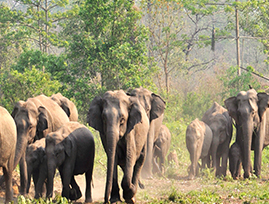
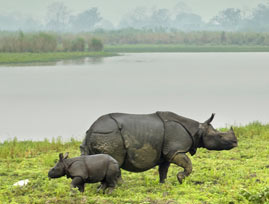
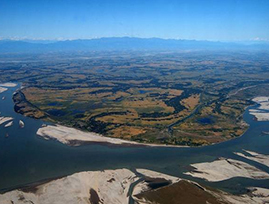
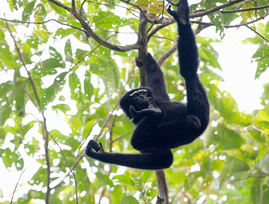
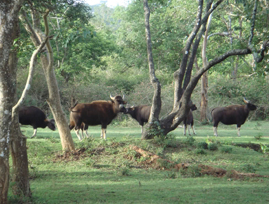
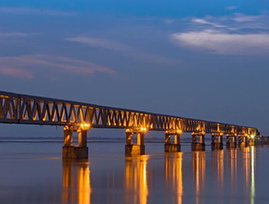
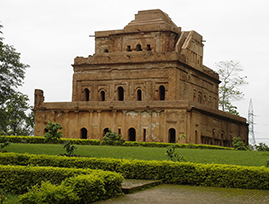
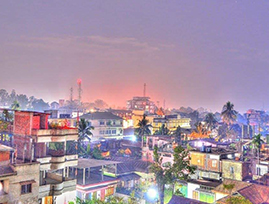
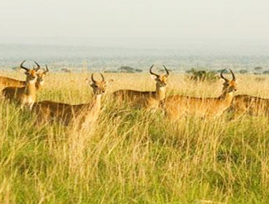
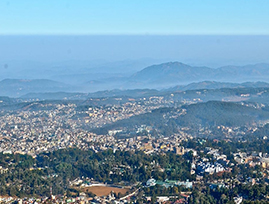
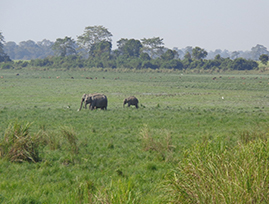
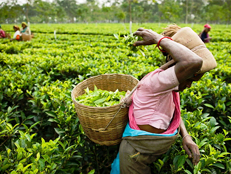
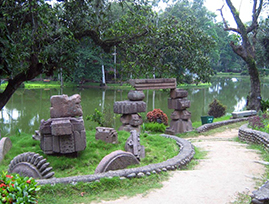
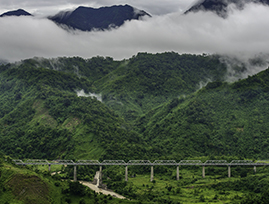
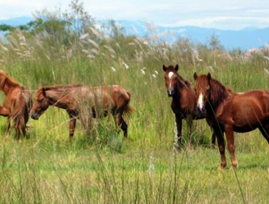
 Share
Share Home
Home Packages
Packages Book Now
Book Now